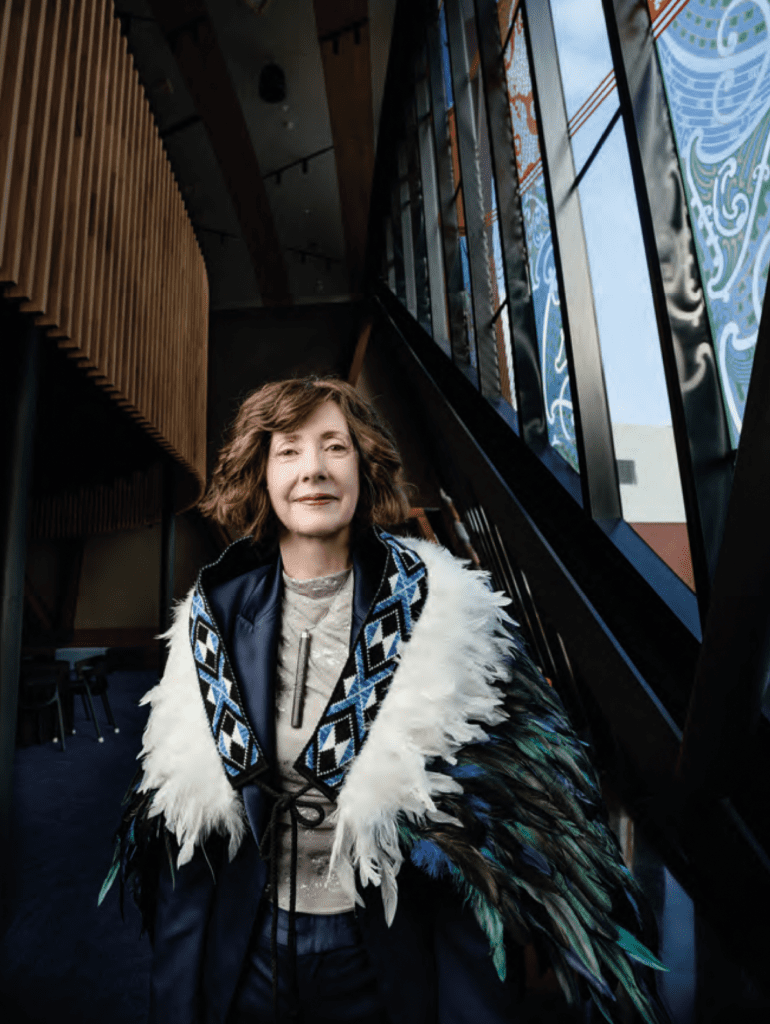Wahine toa Deidre Brown has become the first non-architect to win New Zealand architecture’s highest honour.
Deidre Brown (Ngāpuhi, Ngāti Kahu) dreamt of being an architect, trained as an architect, but never practised as one. “Mine is not a standard architectural career. My practice has been based in universities and communities rather than offices or construction sites,” says Brown, deputy dean, Faculty of Creative Arts and Industries, University of Auckland.
The academic and author’s practice has been devoted to learning about and teaching what New Zealand architecture is. The interest started when Brown, who grew up in West Auckland, enrolled in the university’s school of architecture in the 1990s and in her first crit was told to “leave Māori architecture on the marae where it belonged”.

Her response was to do the opposite, by delving deeper into the history of Māori architecture. “I went in with the intention of becoming an architect. That’s what I really wanted to do,” says Brown. “I’d become so fully swept up in this idea of there being a Māori architectural history, my curiosity got the better of me and I just wanted to keep going. I didn’t know what would be at the end of it, but I knew that I couldn’t live if I couldn’t find out more.”
Since then, not a year has passed without Brown receiving a fellowship, a scholarship, a new academic role, or an award, publishing a book or paper — her seminal book, Māori Architecture: from fale to wharenui and beyond (2009), was a landmark achievement in New Zealand history — or curating an exhibition.
In 2019, Deidre Brown’s appointment as Head of Te Pare School of Architecture and Planning at the University of Auckland made her the first indigenous woman in the world to hold such a position. Last month, Te Kāhui Whaihanga New Zealand Institute of Architects named her as the recipient of the Gold Medal, the highest honour in New Zealand architecture. She is the first academic to be awarded the medal, and the first Māori woman.
“Through teaching, research, writing, art curation, leadership, and mentoring, Deidre has touched the lives of many. Her sphere of influence is so far-reaching that it’s impossible to define,” Te Kāhui Whaihanga said of the professor in the Gold Medal citation.
Last year, on top of everything else she does, Brown established the MĀPIHI Māori and Pacific Housing Research Centre, which she co-directs with former student Dr Karamia Müller. The organisation is aimed at supporting Māori and Pacific whānau to live in healthy, affordable, and sustainable homes.
“Architecture is a thinking discipline and a design discipline, and it’s about working directly with people and enhancing their hauora,” she says.
Brown understands that her career in academia has been important in shaping and reflecting our very own built environment.
“A contribution to architecture is one that positively influences the lives of others through whatever means you have available, whether they be words, discoveries, teaching, or design,” she says. “I have had the pleasure of teaching hundreds of talented students, and seeing them flourish in practice and in other professions. You can change the world one building at a time; in teaching, you can change it through 100-plus graduates a year.”




